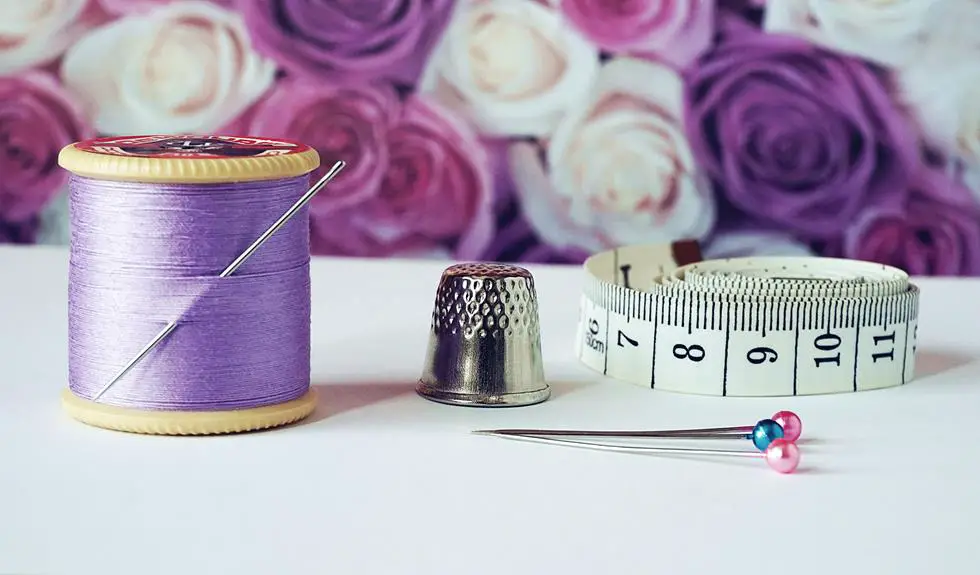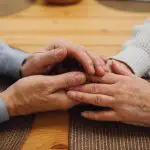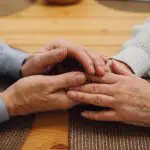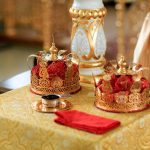When you decide to make a seersucker quilt, you're choosing a fabric that's not only stylish but also practical. You'll want to gather high-quality seersucker and prepare it properly to ensure your quilt stands the test of time. Start by cutting your fabric into the desired shapes and assembling the quilt top with care. As you work through the layers, keep in mind the importance of even seams and stable batting. But there's more to consider as you approach the finishing touches—what method will you use to bind your quilt for that polished look?
Table of Contents
Gather Your Materials
Before you dive into making your seersucker quilt, gather all the necessary materials to ensure a smooth crafting experience.
Start with high-quality seersucker fabric, which gives your quilt its unique texture. You'll also need a rotary cutter, cutting mat, and rulers for precise measurements. Don't forget to grab some batting; it adds warmth and structure to your quilt.
Next, pick up a sewing machine if you don't already have one, along with coordinating thread that complements your fabric choices. A seam ripper is essential, too, in case you need to correct any mistakes during the sewing process.
If you're a beginner, consider using safety pins or fabric clips to hold your quilt layers together while you sew.
Choose Your Fabric
Choosing the right fabric is crucial for creating a stunning seersucker quilt that showcases your personal style. Start by selecting high-quality seersucker fabric, known for its unique texture and lightweight feel. It's perfect for a cozy quilt, especially in warmer weather.
You'll want to consider color and pattern carefully. Think about your overall design theme. Do you prefer bold colors or soft pastels? Stripes, plaids, or floral prints can all work beautifully together. It's a good idea to mix and match different patterns while ensuring they complement each other.
Next, ensure you choose fabrics with similar weights. This consistency helps your quilt lay flat and prevents puckering during the quilting process. Don't forget about the backing fabric; it should also be durable and visually appealing.
Prepare the Seersucker
Once you've selected your seersucker fabric, it's time to prepare it for quilting by pre-washing to remove any sizing and to prevent future shrinkage.
Start by filling your washing machine with cold water. Add a mild detergent—avoid using fabric softener, as it can affect the fabric's texture.
Gently place the seersucker fabric in the machine, ensuring it has enough room to move freely. This step helps maintain the integrity of the fabric as it washes.
Once the cycle is complete, remove the fabric and hang it to dry or tumble dry on a low setting. Be sure to check the care instructions on your fabric, as some seersuckers may have specific recommendations.
After the fabric is dry, press it with an iron set to a low temperature. This will help smooth out any wrinkles while still being gentle on the material.
Pay attention to the textured surface; you want to avoid flattening it too much.
Once you've prepped your seersucker, you're ready to move on to cutting your fabric pieces for the quilt. Enjoy the process, and take pride in the care you've given your fabric!
Cut the Fabric Pieces
You'll want to gather your tools and measure out your seersucker fabric into the desired quilt pieces. A sharp rotary cutter, a cutting mat, and a ruler are essential for precise cuts. Start by deciding on the dimensions for your quilt pieces. Whether you're going for squares, rectangles, or a more intricate pattern, ensure your measurements reflect your vision.
To help visualize your progress, consider this emotional breakdown of your fabric cuts:
| Step | Emotion |
|---|---|
| Choosing your fabric | Excitement |
| Measuring carefully | Anticipation |
| Cutting into pieces | Focused determination |
| Organizing pieces | Satisfaction |
| Ready to assemble | Joyful eagerness |
As you cut, keep your workspace tidy to prevent any confusion. Lay out your pieces to see how they fit together, igniting a sense of creativity. Remember, cutting is a crucial step in your quilting journey, setting the foundation for your masterpiece. Enjoy the process and let the fabric inspire you as you transform it into something beautiful!
Assemble the Quilt Top
Assembling the quilt top is where your carefully cut pieces come together to create a beautiful design. This is the moment you bring your vision to life, and it's both exciting and rewarding.
You'll start by laying out your pieces on a flat surface, arranging them in a way that pleases your eye.
Follow these steps to ensure a smooth assembly process:
- Pin the Pieces: Use pins to hold your fabric pieces together. This keeps everything aligned and prevents shifting when you sew.
- Sew with Precision: Begin sewing the pieces together, taking your time to maintain even seams. This attention to detail pays off in the final look of your quilt.
- Press the Seams: After sewing, press the seams open or to one side. This helps to flatten the fabric and creates a crisp finish.
- Check for Consistency: Step back and examine your work. Make sure the pattern flows well and adjust any pieces if needed.
You're building something special, and each stitch brings you closer to a cozy quilt that you'll cherish for years to come!
Add the Batting and Backing
Now it's time to layer your quilt with batting and backing, adding both warmth and structure to your creation.
Start by laying your backing fabric down on a flat surface, wrong side up. Make sure it's smooth and free of wrinkles. Then, spread your batting on top of the backing. Trim any excess batting, leaving a couple of inches around the edges to ensure full coverage.
Place your quilt top, right side up, over the batting. Align everything carefully, taking a moment to ensure that the layers are even and centered. If you need to, use safety pins or fabric clips to secure the layers in place. This helps prevent shifting while you work on your quilt.
Once everything is aligned, gently smooth out any wrinkles, ensuring the fabric layers sit flat. If you've chosen a thicker batting, it may give your quilt a cozy feel, while a thinner option will create a lighter quilt.
Take your time with this step—proper layering is crucial for a successful quilt. Now that your batting and backing are in place, you're ready to move on to the next steps in bringing your seersucker quilt to life!
Quilt and Finish the Edges
Now it's time to quilt and finish the edges of your seersucker masterpiece.
You'll want to choose the right binding that complements your fabric, and then apply techniques for edge finishing that keep everything neat and secure.
Let's explore how to achieve a polished look for your quilt!
Choosing the Right Binding
When it comes to finishing your seersucker quilt, choosing the right binding can make all the difference in enhancing its overall appearance and durability. The binding not only provides a polished look but also protects the edges from wear and tear.
Here are four key factors to consider when selecting the perfect binding:
- Color & Pattern: Choose a binding that complements or contrasts with your quilt's colors. A bold color can add a striking finish, while a subtle tone can create a cohesive look.
- Fabric Type: Opt for a fabric that's durable yet flexible. Cotton or cotton blends work great, as they can withstand the quilt's wear and keep their shape.
- Width: Decide on the width of your binding. A wider binding can offer a more dramatic effect, while a narrower one provides a clean, minimalist finish.
- Style: Consider the overall style of your quilt. A traditional quilt may look best with a classic binding, while a modern design might benefit from a unique or asymmetrical edge.
Techniques for Edge Finishing
How can you effectively finish the edges of your seersucker quilt to ensure a polished and durable result?
Start by choosing the right binding technique. You can opt for the traditional double-fold binding, which gives a clean, professional look. Cut your binding strips to 2.5 inches wide, and join them end to end for a continuous length.
Next, attach the binding to the quilt's front side, aligning it with the raw edges. Use a 1/4-inch seam allowance, and remember to miter the corners for a neat finish. Once you've sewn the binding on, fold it over to the back of the quilt, securing it in place with clips or pins.
For the final step, hand-stitch the binding down using a slip stitch for an invisible finish. This not only ensures durability but also enhances the quilt's overall appearance.
If you prefer a faster method, you can machine-stitch the binding on both sides. Whichever technique you choose, take your time to ensure all edges are secure, giving your seersucker quilt that polished look you desire.
Happy quilting!
Frequently Asked Questions
Can I Use Other Fabrics With Seersucker for My Quilt?
Absolutely, you can mix other fabrics with seersucker in your quilt! Just ensure they complement each other in texture and weight. Experimenting with different materials can create a unique and beautiful design you'll love.
How Do I Wash My Seersucker Quilt After Completing It?
To wash your seersucker quilt, use cold water on a gentle cycle. Avoid harsh detergents, and skip the bleach. Tumble dry on low heat or air dry to maintain its texture and appearance.
What Tools Are Essential for Cutting Seersucker Fabric?
To cut seersucker fabric, you'll need a sharp rotary cutter or fabric scissors, a cutting mat, and a clear ruler. These tools ensure precise cuts, making your sewing process smoother and more enjoyable.
How Can I Create Unique Patterns With Seersucker?
To create unique patterns with seersucker, experiment with various cutting techniques, mix colors and textures, or incorporate appliqué. Don't hesitate to play around with shapes and arrangements; your creativity can lead to stunning results!
What Is the Best Way to Store My Quilt When Not in Use?
To store your quilt when not in use, fold it neatly and place it in a breathable cotton bag. Avoid plastic, as it can trap moisture. Store it in a cool, dry place to prevent damage.
- Tetron Fabric for Marine Applications: Durability and Use Cases - June 18, 2025
- Tetron Fabric for Outdoor Furniture: Weather Resistance and Care - June 18, 2025
- Tetron Fabric for Wall Coverings: Style and Application Tips - June 18, 2025







